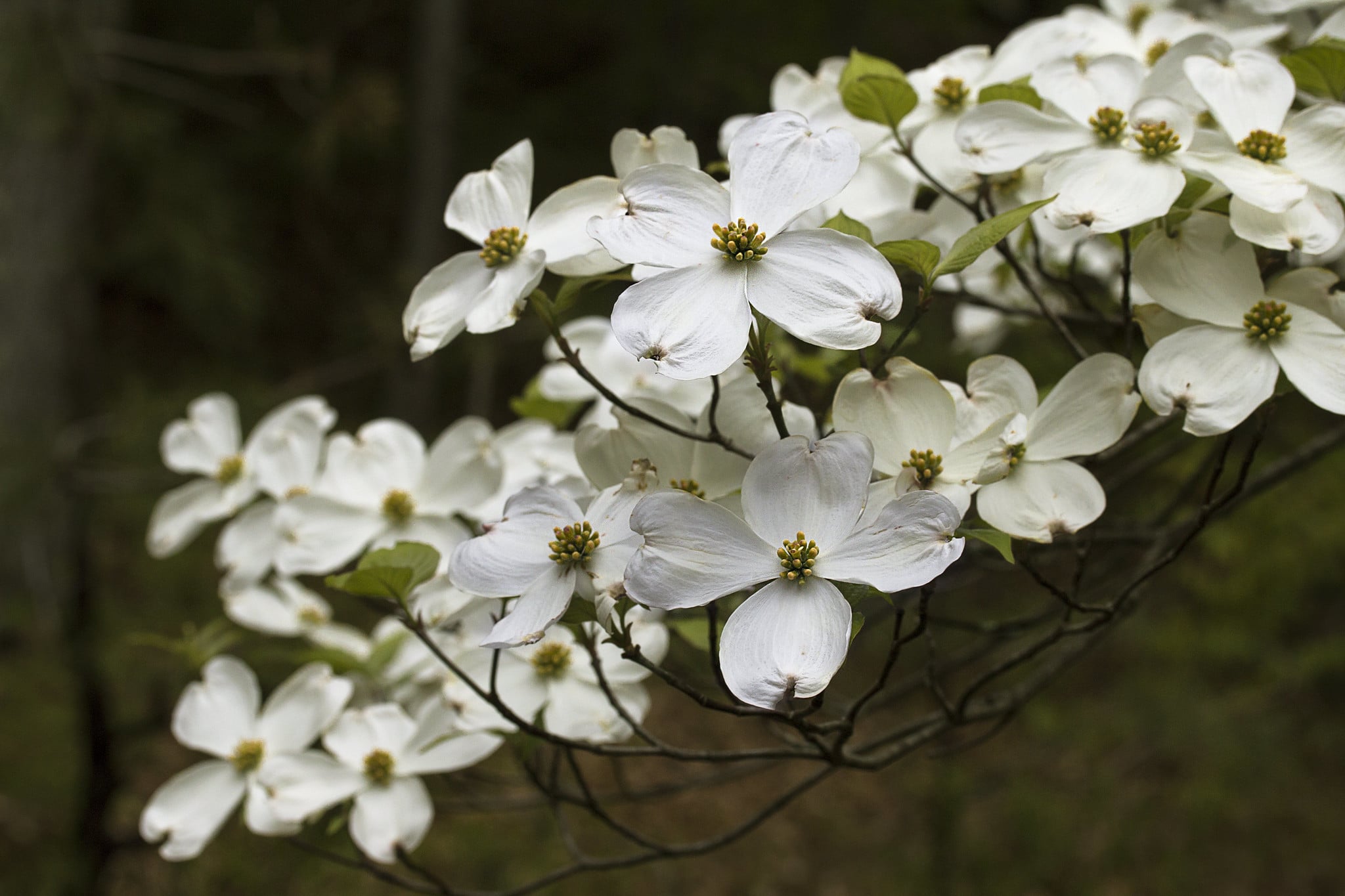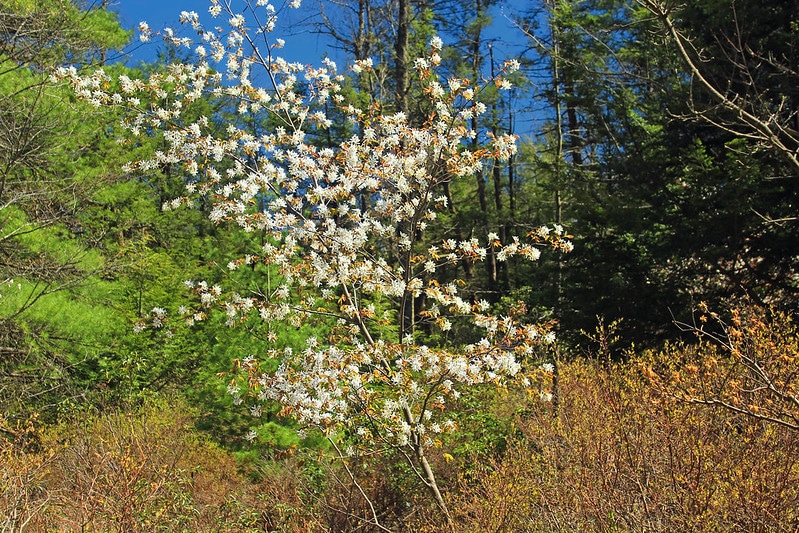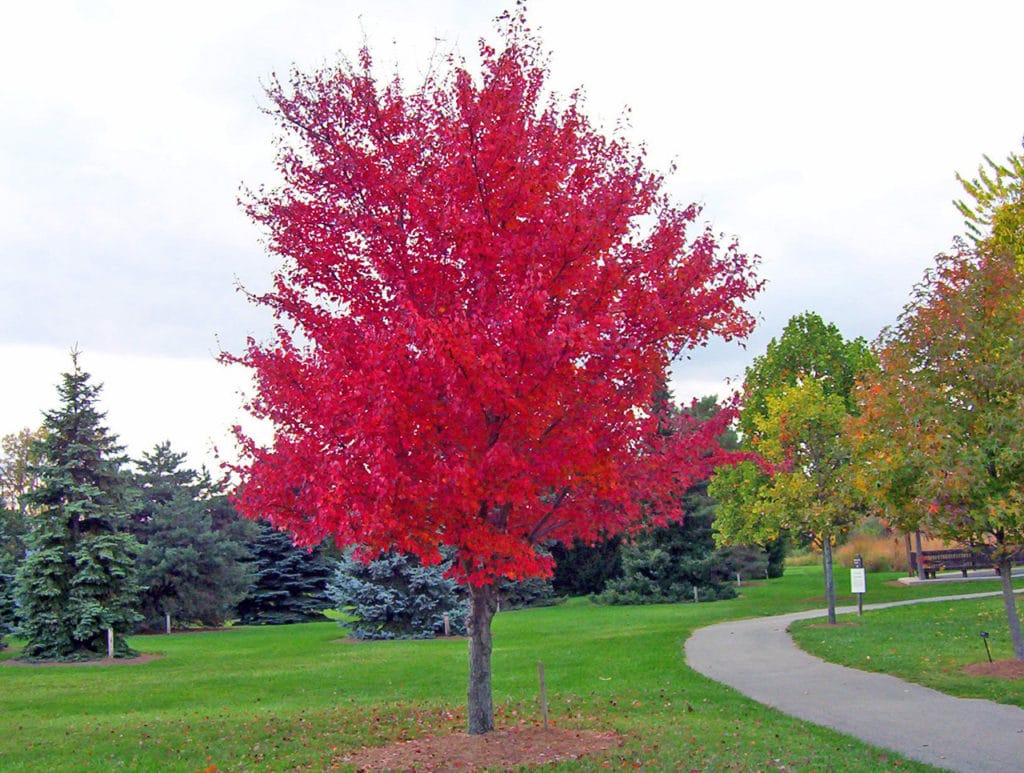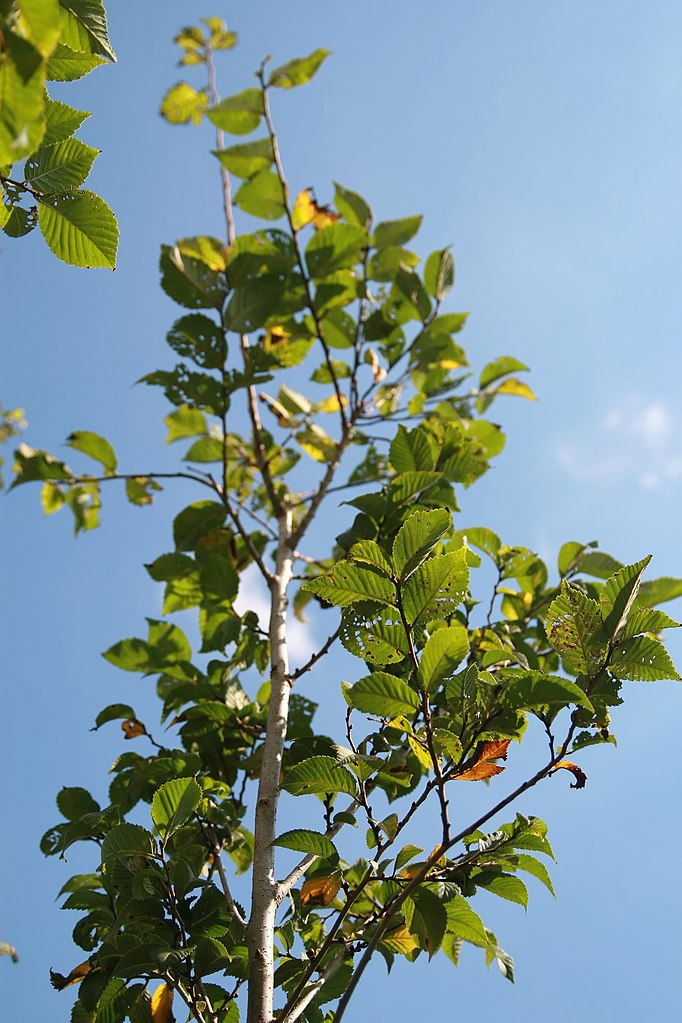
When people think about trees in Washington, D.C., many automatically think about the famous cherry trees that bloom in the spring to create amazing displays of color. That’s no reason, though, to overlook some of these other great trees to plant if you call the area home.
If you’re in the D.C. area you’re lucky to live in an area that abounds in native trees and naturalized trees. You have many worthy woods to choose from when picking something for your yard. The climate and low elevation of the Mid-Atlantic area mean many plants grow well.
On the flip side, this also means it can be daunting to choose from such a large selection, which is where I’m going to try to help out with a shortlist of (my recommendation for) the best native trees to plant in Washington, D.C.!
Flowering Dogwood
Known to be one of the most spectacularly beautiful flowering trees, the flowering dogwood (Cornus florida) has earned a solid spot at the top of this list. Trees grow on average 20 to 30 feet tall with a similar-sized spread. In April and May, trees erupt with long-lasting, showy blooms of white or pink. The flowers (pictured above) are actually tiny yellowish-green clusters surrounded by 4 petal-like bracts (modified leaves) that create the appearance of blooms 3 to 4 inches in diameter.
Flowering dogwood trees grow in a variety of soils but prefer those that are well-draining and slightly acidic.
Serviceberry

Considered either a large shrub or a small deciduous tree, Serviceberry (Amelanchier arborea) is a great native species to plant if you’re looking to encourage pollinators, birds, or other small animals into your yard. Trees grow to 25 feet, either as a single-stemmed or multistemmed tree. They add about 2 feet of growth annually.
White flowers appear on serviceberry trees in early spring before leaves open. Flowers then develop into small green berries that redden and turn a dark purplish-black in early summer as they ripen. In the fall leaves change to brilliant orange-red.
Eastern Redbud
The Eastern redbud is another beautiful flowering tree to add to your landscape. Growing to a maximum of 30 feet tall, it is one of the most commonly planted trees in residential gardens. The Eastern redbud grows in a range of soils, tolerating acid and alkaline conditions, loams, sand, and even clay soils.
Cercis canadensis puts on a brilliant show in the spring clusters of small magenta buds open up into rosy pink blossoms that may last for up to three weeks. Shortly thereafter heart-shaped leaves unfurl in a red color darkening to a deep green over the summer. Come fall they turn a bright canary yellow.
Red Maple

Acer rubrum, commonly known as the red maple, adds a majestic touch to landscape designs. In cultivated settings, they easily reach 60-feet tall with a canopy spreading 35 to 45-feet in width. Leaves vary from three- to five-lobed with the distinctive V-shaped angles between the lobes and turn a stunning shade of red in the autumn.
Red Maple has the greatest distribution of all tree species from north to south along the East Coast. It can be found from Eastern Canada, down to Florida, and all the way over to east Texas preferring slightly acidic, moist soils in full sun locations.
Oak
With more than a dozen oak tree varieties native to the D.C. area, you have plenty of options to choose from. To make it easier oak trees can be divided into two main categories: red oaks and white oaks. Red oaks have leaves with pointed lobes; the lobes of the leaves on white oaks are rounded and smooth.
Oaks are easy to garden under and are incredibly hardy and resilient. These long-living trees have been known to survive for hundreds and hundreds of years.
American Elm

Another iconic tree species, the American elm is trying to make a comeback in urban landscapes. This graceful tree can tower 100-feet above the ground and was historically planted along city streets because of its vase-like shape.
In the 1930s an accidental introduction of a fungus known as Dutch elm disease (DED) ravaged stands of American elms. By the late ’70s, less than 45% of the original urban population still existed, making DED one of the most devastating tree diseases in the world.
Research has determined cultivars that are resistant to the disease, to help increase the long-term recovery of the American elm as a canopy tree. Resistant cultivars include New Harmony, Princeton and Valley Forge.
Talk to a Washington D.C. landscaping expert if you need help selecting plants or trees for your landscape.
Main image credit: Dogwood flowers, Liz West, CC 2.0.